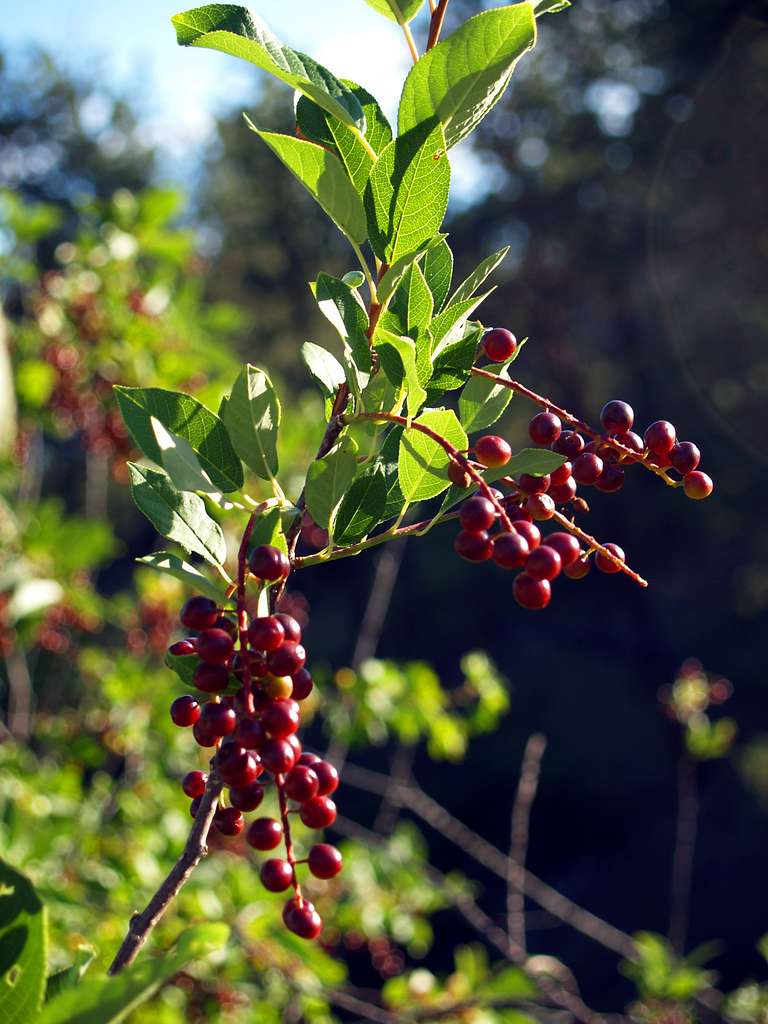Native Plant: Chokecherry is a plant for all seasons

Editor’s note: Once a month OSU Extension Master Gardener Volunteers in Franklin County profile a plant that occurs naturally in central Ohio.
Those looking for a spring-flowering native shrub that can form a hedge or be cultivated as a small tree may want to look no further than Prunus virginiana, commonly known as chokecherry.
Native to North America, from Newfoundland to Saskatchewan and as far south as North Carolina and Kansas, chokecherry, also known as bitter berry due to the acidic taste of its immature berries, is truly a plant for all seasons.
A manageable 20-30 feet tall with a spread of 15-20 feet at maturity, chokecherry produces showy, fragrant white flowers in 3-6-inch-long clusters from April to July, followed by red berries, which darken to deep purple by September, just as its leaves are beginning to turn shades of gold and orange.
In the wild, chokecherry may be found as an understory tree at the edge of a woodland or in thickets in ravines, slopes and open fields. It thrives in full sun, but tolerates part shade and, while requiring only low to moderate moisture, is also happy in moist soils.
It grows in soils of all types, from shallow and rocky to rich, moist loam. Flower and fruit production increase as sun exposure and moisture levels increase.
While not commonly found in garden centers, chokecherries are worth sourcing from specialty native-plant purveyors due to their value to multiple species as a source of food and shelter.
Their early-blooming flowers offer nectar and pollen to bees before many other trees and plants bloom in the spring. Birds eat the fruit, as do small mammals. Caterpillars, aphids, borers and other insects that feed on the plant provide a natural buffet for the birds that nest in or near the shrub.
Perfect for use in a pollinator or butterfly garden, the chokecherry is a host plant for the eastern tiger swallowtail, the coral hairstreak and the red-spotted purple.
It should be noted that the berries that nourish so much wildlife can be toxic to people if the seeds are ingested, as they contain amygdalin, which our systems convert to cyanide.
Cooking the berries destroys the amygdalin in the seeds, making the fruit suitable for jams, jellies and preserves.
Growing conditions
Hardiness zones: 2a–6b
Sun: Full sun to part shade
Water: Medium to dry; drought tolerant
Maintenance: Medium
Soil: Moist loam, sandy, clay
Propagation: Seed; rooted from hardwood, softwood or root cuttings
Pests/diseases: Borers, aphids, scale, leafhoppers, caterpillars; leaf spot, leaf curl, powdery mildew, root rot
This article originally appeared on The Columbus Dispatch: Native Plant: Chokecherry berries nourish wildlife

